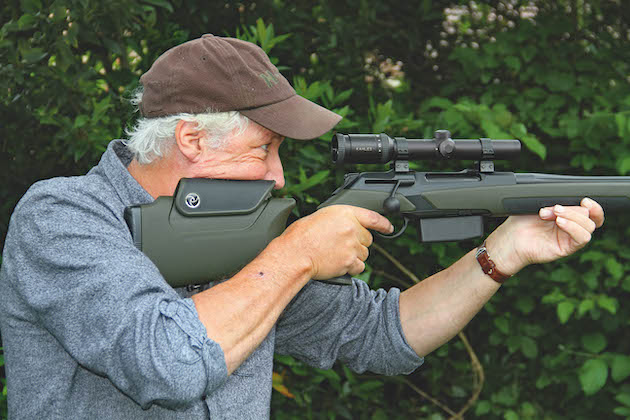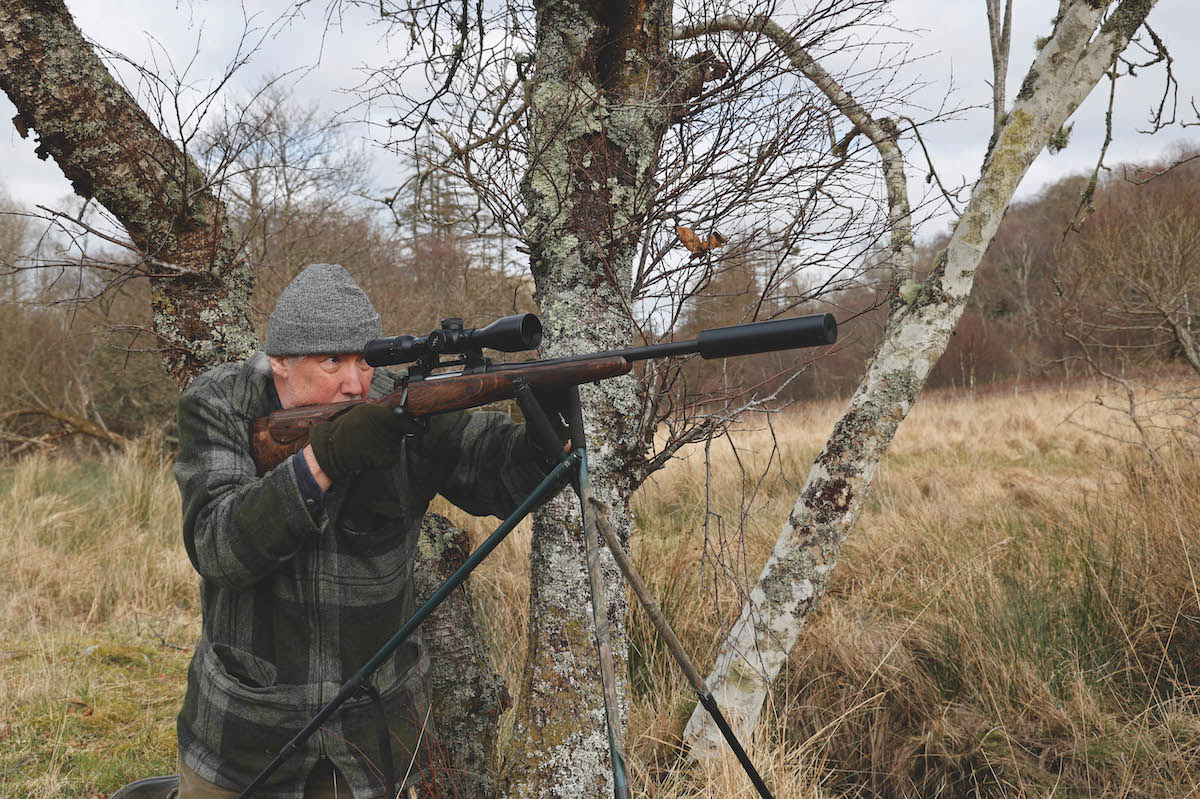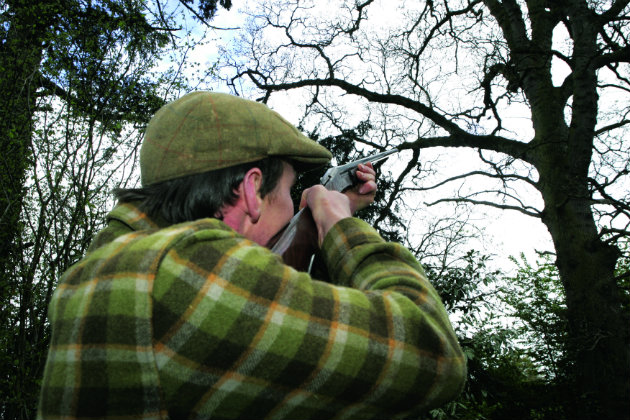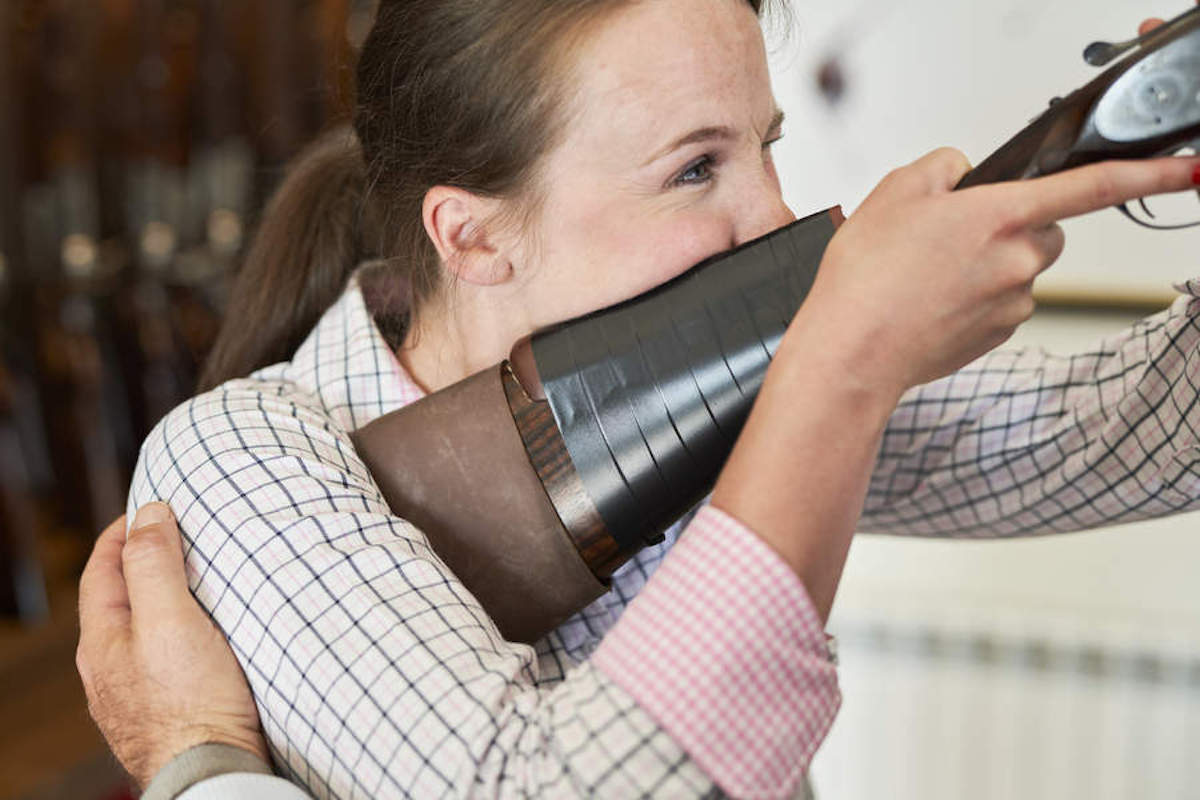Does your rifle fit you? Here’s how to find out.
It doesn’t matter how good your rifle is, nor how good a shot you are, if it doesn’t fit you well you won’t shoot accurately, warns Bruce Potts in Shooting Times

If your rifle doesn't fit you well you won't shoot accurately
I remember having to wrestle with my first. 22 rimfire, a BSA Martini action 12/15, out rabbiting. It was accurate but it weighed a ton, was far too long and the stock was short with a low comb. In those days we made do, but today attitudes have changed and rifle shooters expect a better-proportioned firearm with some degree of adjustability built in to ensure good handling and balance.
How a rifle balances, fits, operates and holds in the aim is paramount for delivering that lethal first shot. It is the stock dimensions that make the greatest difference, but do not forget about the barrel weight/profile and length. Ask if a moderator is going to be fitted, what weight scope and, often forgotten, how does the rifle handle when it has a full magazine of cartridges, as balance will change.
You can go the custom route, where a rifle is fitted like a Savile Row suit, but for most, choosing the correct rifle means a trip to the gunsmith to handle one or visiting one of the game fairs. Most manufacturers have realised we rifle shooters are increasingly savvy and want more variety and adjustability. Some now offer adjustable stock designs as well as shorter barrels as standard.
Checking rifle fit
Let’s look at what affects a rifle’s handling. The most important part of any rifle is the stock. It not only needs to fit you correctly, but it also has to bed the action for consistent accuracy too. It’s one of those often-forgotten secrets that influences a successful stalk; the stock must fit you to achieve ultimate fieldcraft.

The tip of the trigger finger should fit exactly on the trigger blade for a correct sear release.
You don’t have to have the fanciest stock for it to fit correctly. As with a shotgun, if the sights line up when you shoulder the rifle you are pretty much there. A good way to check if a stock fits is to look at an object 50 yards away then close your eyes, shoulder the rifle and open both eyes. If it’s a good fit, the sights/scope should be close to that object. Try this at differing ranges and in different stances to mimic your shooting style.
Manufacturers make stocks to fit the average person, so one of the most crucial measurements for rifle fit is the length of pull — the distance from the rifle’s butt to the trigger-blade. The industry standard on a rifle is 13.75in, which is fine, but I am 6ft 2in and I have my stocks at 15.5in. You can test the correct length by positioning the rifle’s butt stock in the crook of the elbow and the pad of your finger should rest effortlessly on the trigger-blade. Too short and you are overstretching and can jerk the trigger, pulling off target; too long and a precise release is dubious.

We owe it to our quarry to ensure we shoot as accurately as possible
Length of pull
Luckily, many stocks these days allow a change of length of pull by the addition of inserts between stock and recoil pad, and this can also adjust for pitch and cast. If your stock does not have this option, changing the recoil pad for a slimmer or thicker one is easily achieved. You can also use a shotgun-type slip-over pad to compensate.
The cheekpiece is a crucial part of any rifle because, with the use of a riflescope, the older low comb height styling is too low for correct usage. Your cheek should sit snugly to the comb section to ride with the recoil. Today, you have either a classic, straighter-line comb at the correct height or raised cheekpieces, Monte Carlo styling but fixed height. (Scroll down to read more about adjustable cheekpieces.)
We have seen adjustable-height cheekpieces emerge, which helps enormously to get your cheek at the right height for comfort and unstrained scope use. We are all different sizes and have longer faces, chubbier cheeks and longer jaws, so getting the cheek height correct is paramount. I often use a slip-on lifter, a sniper’s cheekpiece that comes in various sizes and is made from soft neoprene, so you get a good cheekpiece weld without recoil that makes you flinch.

The pistol grip ergonomics must suit your hand
Next, the pistol grip should not be overlooked either because the length, rake and any palm swell all influence handling significantly. If your firing hand is not comfortable on the pistol grip, you will want to readjust your hold, thus destroying that ‘natural handling’ or instinctive technique.
Rake’s progress
Many grips are too slim. I like a slimmer top section and fatter lower section for a relaxed hold, as well as a palm swell as this steadies the aim and the rake — the angle or slant influence handling. I like a more upright stance but some prefer a longer rake, and on my custom rifles the pistol grip also cants out to the side because this is the most relaxed hold for me.
The style — Sporter, pistol grip or thumbhole — again affects handling. I love thumbholes because they have a higher comb and stronger top section to the stock, and they allow a steady shooting position from any angle.
The drop at heel on a rifle has a big influence on how the recoil is translated to your shoulder. The classic stock profile is pretty straight, which places the comb higher and therefore recoil is transmitted more linearly, so less cheek slap. If the heel is lower, a higher cheekpiece is needed to correct scope alignment, and recoil usually moves downward away from the cheek.
Remember, though, that a broader recoil pad will dissipate recoil better. But make sure it is flat and not too curved, otherwise it will snag as you mount it. A slim cheekpiece will bite more than a shallow broad one.
Stock material greatly determines hold and rifle fit. Walnut is much lighter compared with laminate, while the popular synthetic-type stock weighs far less than either. How each of these types of stock materials interact with the metalwork, barrel and action greatly influences the overall balance of a rifle. The density of the wood or laminate stock can help to balance a rifle fitted with a sound moderator, stopping that muzzle-heavy stance, while the lighter synthetic stock is aided by a shorter barrel, which helps it to achieve the same desirable handling.
Fore-end width and length too are key areas that need thought. Classic slimline fore-ends look nice but, with today’s use of sound moderators, they often rotate or slip in the hand under recoil. A broader base and thinner top help correct grip and maintain a steady aim.

Length and performance add up to a rifle that fits, handles and balances
Barrel length
The last part of the equation is the barrel profile and length characteristics, and their influence on overall handling and fit. There’s not a lot about the action you can alter, but the barrel’s weight and length can make a massive difference to the overall rifle’s performance. Ask yourself if you really need a long and heavy varmint-weight barrel if you only honestly shoot a few shots out in the field. You will be far better off with a Sporter/slimmer-profiled barrel that will greatly improve handling and not affect accuracy.
I know 24in was the standard barrel length but really, on most cartridges, you can have a barrel length at 20in to 21in with no real detriment to ballistics except perhaps the .243. Having that shorter barrel greatly improves how the rifle shoulders, handles and naturally aims. It also means that, when a moderator is fitted, the overall length is not increased adversely, so you still have a great-handling gun with a good rifle fit.
Scrutinising all these aspects of a rifle’s anatomy and rifle fit, and how they relate to your body shape, size and shooting style should improve your enjoyment of the sport and prove more accurate too.

Adjustable cheekpiece on rifle
Adjustable cheekpieces
Q: I see a lot of rifles now with adjustable cheekpieces. Is there any real benefit to buying one with this option? Will it improve my rifle fit?
A: If you mount the riflescope at the correct height to the comb of your rifle for a good ‘cheek weld’, then all is well. However, we shooters are all different sizes so the ability to adjust the comb height is advantageous. It means you can customise the rifle to suit your stature, scope size, eye relief and comfort level.
I quite like a heads-up angle when viewing a scope and an elevating cheekpiece allows me to do this. Other shooters prefer a very low scope mounting and so a standard stock will suffice. Make sure the elevating cheekpiece is secure when adjusted for height and has enough length to accommodate your style of shooting or eye relief length — some are quite wobbly and short in this department.
I would not pay a vast amount more for such an option but many new stalking rifles come thus equipped so you can use it or not, it’s up to you








